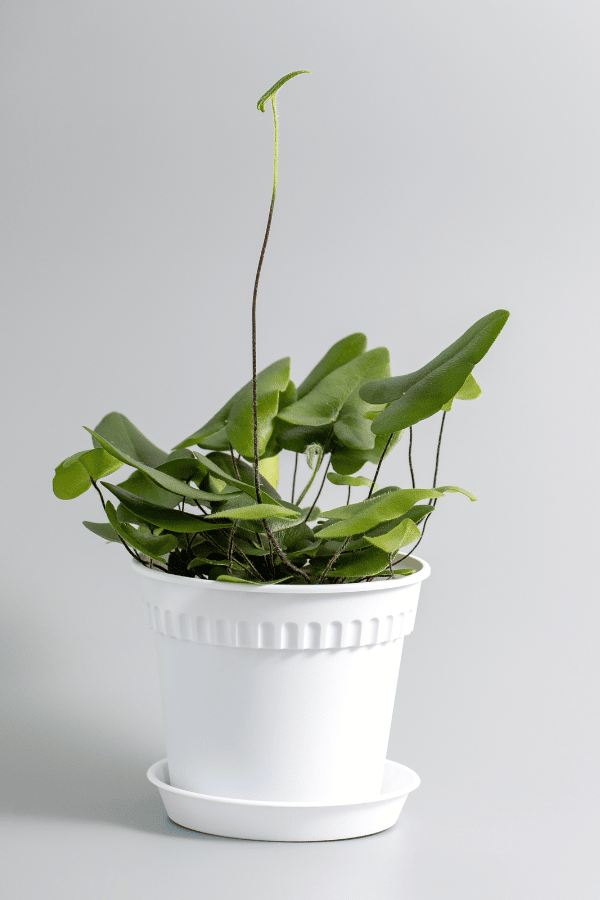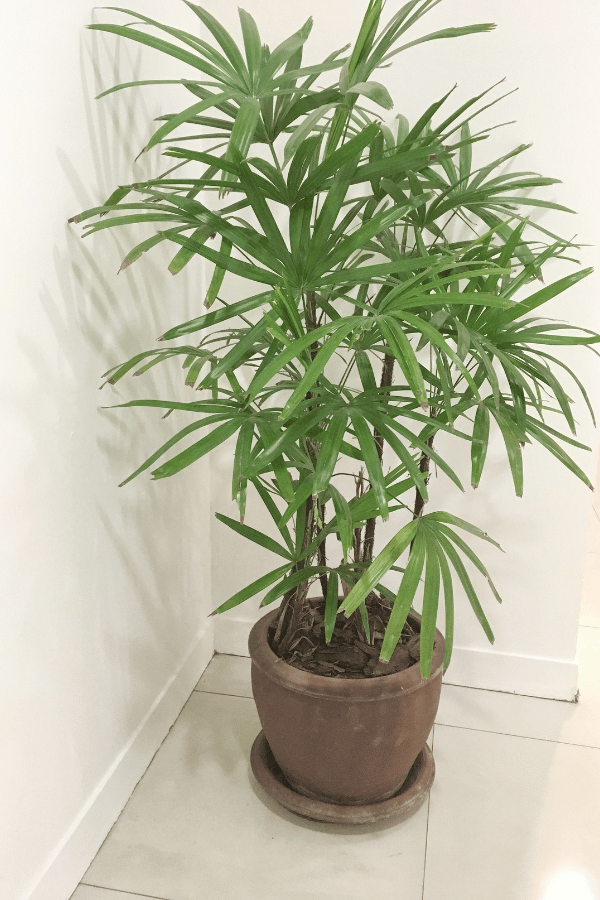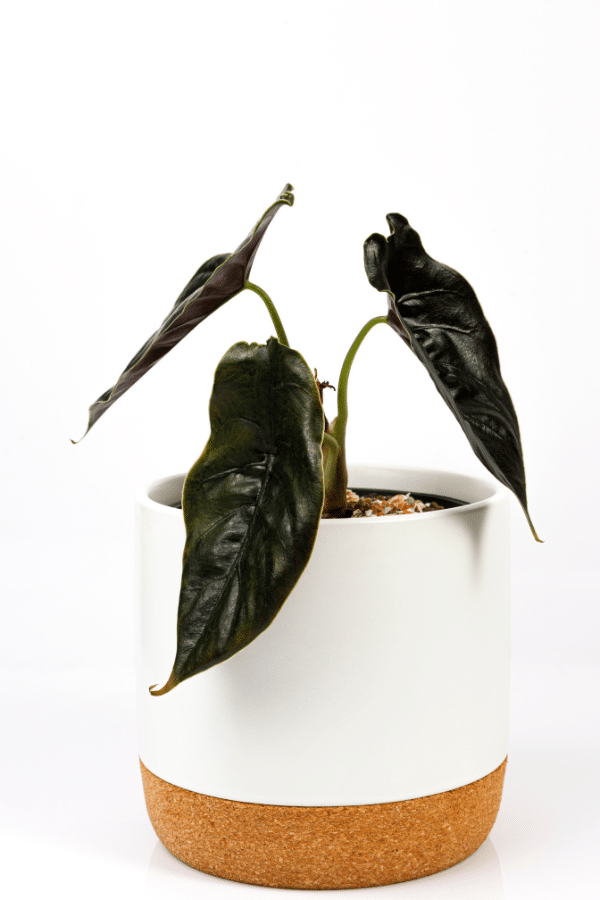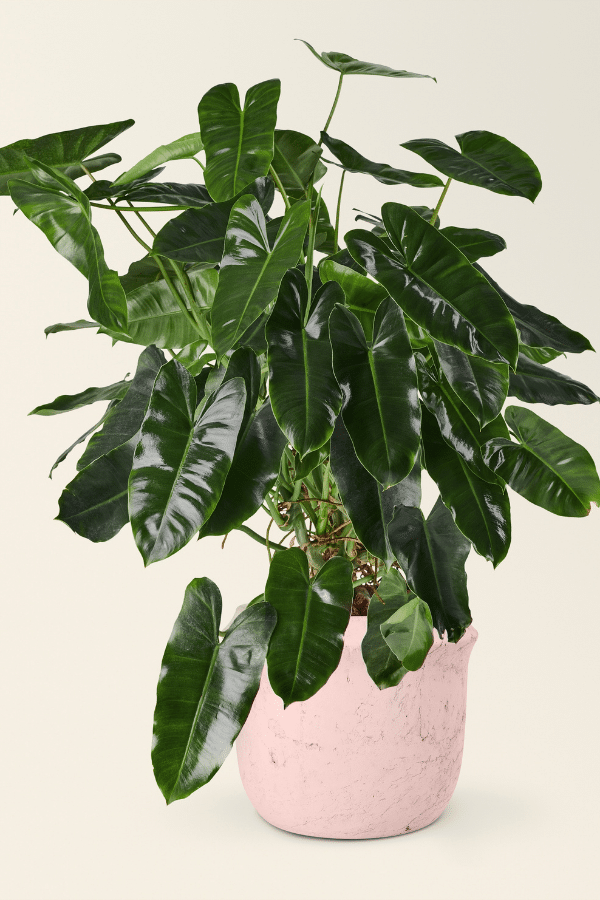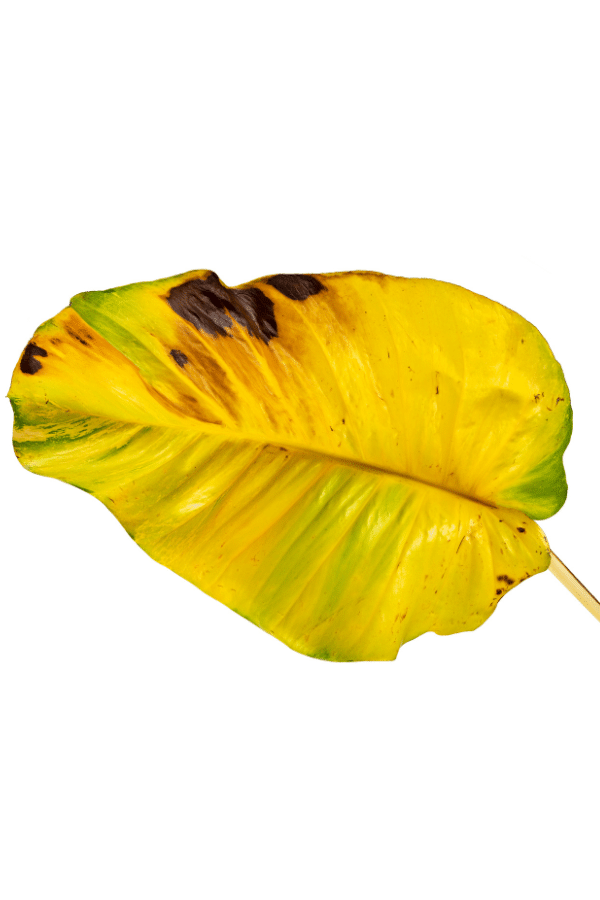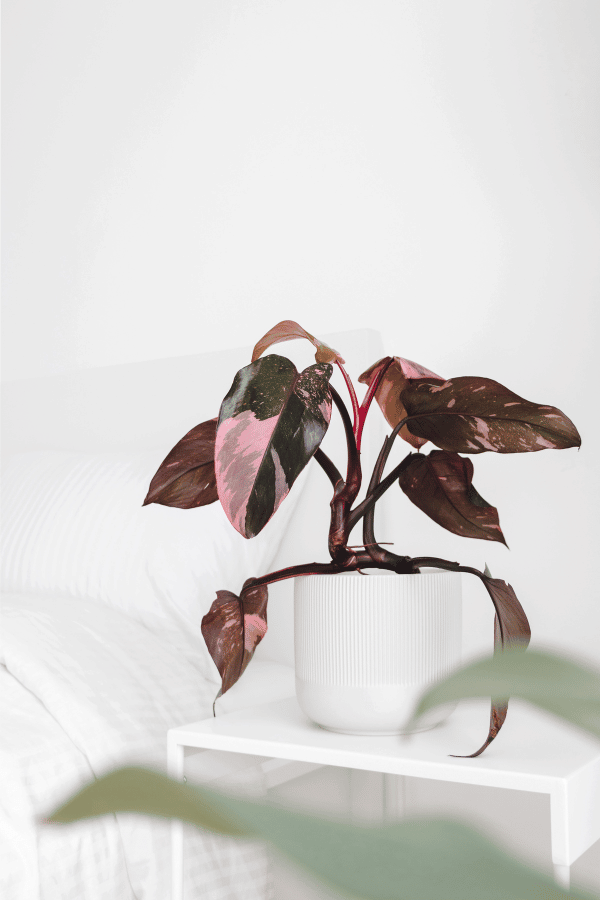Houseplant Soil 101: Definitive Guide to Soil for Houseplants
Houseplant soil is imperative to grow healthy and strong plants. If you are just starting to get into houseplants or have had houseplants for a while but have used regular potting soil as your medium, this article will help you to understand all of the different organic and inorganic materials that are out there.
In this article, I’ll break down all of the different mediums and describe each one in detail on what they do and then go over some of the best DIY houseplant soil mixes.
The goal of a good houseplant soil is to give the plant enough aeration so the roots can move about freely and develop strong roots deep into the soil. There needs to be water absorption mediums to provide roots the support they need to stand tall and the soil needs to aid in nutrient retention as well.
Indoor vs Outdoor Potting Soil
To start out with the basics of soil, there is indoor potting soil and there is outdoor potting soil. There is a big difference between the two.
Outdoor Potting Soil
Outdoor potting soil is dense and compact. It holds its shape if mushed together.
Indoor Potting Soil
Indoor potting soil is much lighter and airy than its counterpart. When mushed together, it will release itself and not stay in a dense form. This will be the best soil for houseplants that comes straight out of the bag. However, if you only want the best for your plants, we’ll dive into all of the different soil mediums that are truly the best for your plants.
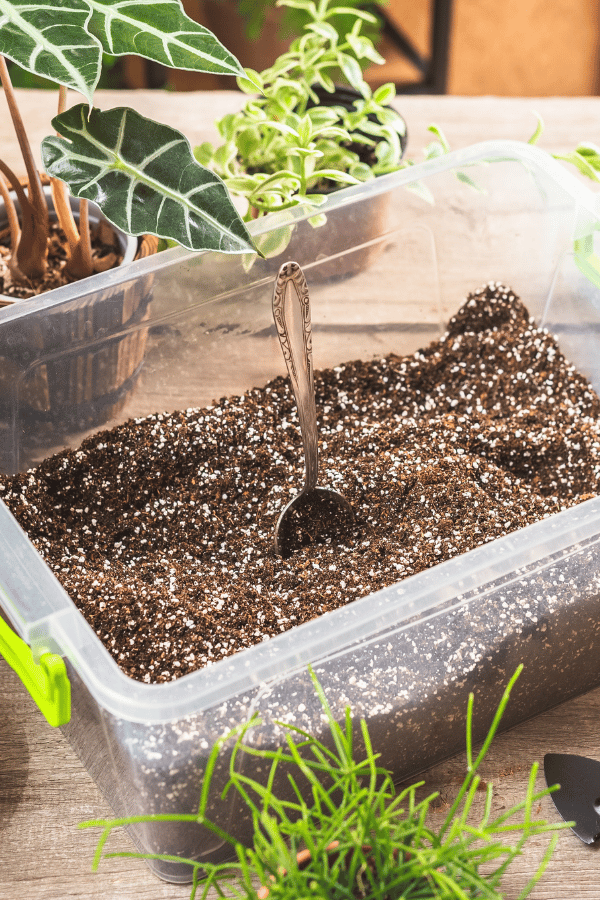
Soil Mediums
Below is a list of all of the ingredients that make up a good soil. I will talk over them in detail providing what they do and why they work. Keep in mind that these ingredients are not meant to be used alone and if used alone, your plant probably won’t see much benefit if it survives.
Peat Moss
Peat moss is harvested in peat bogs, which is a wetland of dead plant materials that are collected as peat. These bogs can usually be found throughout Canada. While peat moss can be a good medium for growing plants and it does grow organically, it takes many years to grow at around 0.02 inches per year which equates to 40 years for 1 centimeter to grow back.
Peat moss is a good medium for soil aeration. Peat moss is able to hold onto nutrients while the plant keeps receiving water.
Sphagnum Moss
Sphagnum moss is harvested just like peat moss but it is harvested later than peat moss which makes it fresher. Sphagnum moss is what moss poles are created out of and it can absorb water well.
Coco Coir
A more sustainable option other than peat moss is coco coir. Peat moss and coco coir do the same thing, it provides aeration to the soil. With peat moss taking such a long time to reproduce, coco coir is made from coconut trees which have a much faster turn around time, making it a more sustainable option.
Vermiculite
Vermiculite is a clay mineral and is a good addition for water retention yet it is lightweight. Vermiculite contains minerals and nutrients such as calcium, magnesium, and potassium. Calatheas and ferns are going to like being planted with vermiculite as well as other moisture-loving plants.
Perlite
Perlite is the little white balls you can find in your soil when you bring a houseplant home. It is a natural glass that was created by cooled lava and is essential for all houseplants. It can be found almost anywhere in stores or online.
There are some precautionary tips you need to know before handling perlite. First, perlite puts off a lot of small dust particles that should not be inhaled. To avoid inhaling these dust particles, you can soak the perlite in water, drain it, and then pour it into your soil mix or you can wear a mask and handle it in a well ventilated area. Buy large perlite if you can as it will be bigger and it will help to aerate the soil more. Small perlite is easily broken down which creates a bag of powder essentially and it’s not good for us to breathe it in and perlite powder won’t do much for your plants, so buy larger perlite when you can.
Perlite has a tendency to make its way to the top of the soil and sit, so when potting with perlite, be sure to place some on the bottom of the pot to provide good drainage.
Pumice
Pumice comes from volcanoes. It can be described as a spongey rock. Pumice has better water retention than perlite does.
Sand
Potting sand is an excellent medium for plants that need well-draining soil.
Bark Chips
Bark chips may also be called orchid bark. This is an organic material and is great for epiphytes, which is a plant that grows on another plant. Pothos, philodendrons, ZZ plants, monsteras, and alocasias will all love bark chips in their soil. Bark is great for structure and soil aeration.
Charcoal
Placing charcoal into your soil will help the soil to retain nutrients. When watering your plants, nutrients will diminish each time. Charcoal helps to keep the nutrients in the soil for longer. It also has antibacterial properties.
Worm Castings
Worm castings are an organic fertilizer for your plants. It is poop that comes from earthworms. Adding this into your soil will help to anchor the plant as well as having some good water retention. Like charcoal, worm castings will help keep the nutrients in the soil longer.
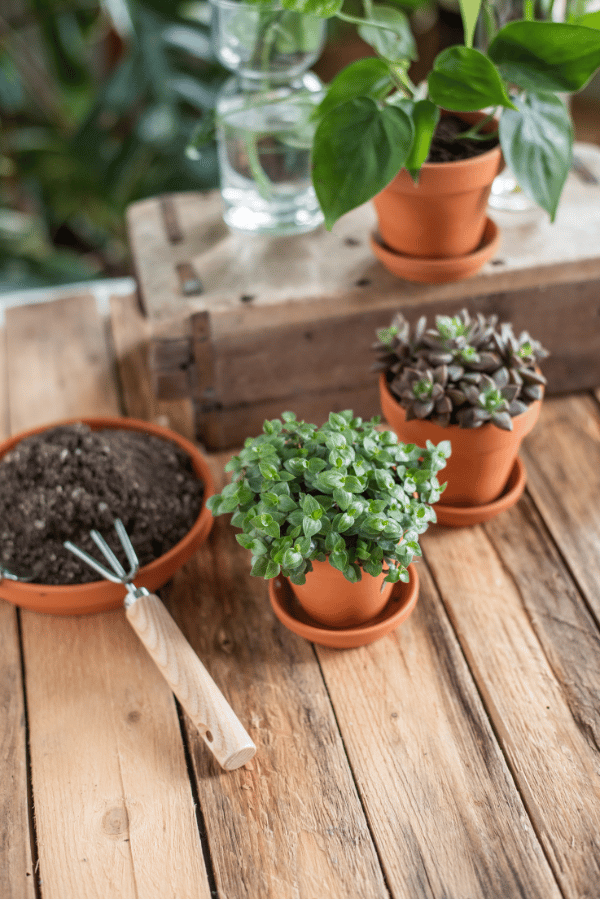
DIY Houseplant Soil
With all of these different mediums, there are some specific mediums that certain plants will like the most and others will not like.
Houseplant Soil for Aroids
Aroids are plants from the Araceae family, such as ZZ plant, pothos, philodendrons, and monsteras. These plants need well-draining soil so mixing up your own soil is important to give these plants what they need.
Mix together perlite, bark chips, coco coir, at a 1 to 1 ratio and add in some worm castings for an organic boost of nutrients. Combine all of this together and then at a 1 to 1 ratio combine with regular indoor potting soil.
Houseplant Soil for Calatheas
Calatheas like fast-draining soil that retains water well.
Mix together coco coir, bark chips, perlite, with a little bit of charcoal and worm castings.
Lazy Houseplant Soil
If you really need to repot your plant and don’t have time to run to the store or can’t find the right supplies, there’s an easy way to keep your plants soil healthy.
Mix together regular indoor potting soil with 30-40% perlite.
Plant Parent Factors
Soil is not a one size fit alls. It really depends on what kind of plant parent you are, where you live and how humid it is in your house naturally, and other factors.
If you want to be nurturing your plants all of the time, consider adding more perlite and bark chips as these mediums are great for drainage, therefore your plant will need you to give them more water. If you don’t want to be watering them all of the time, consider adding more soil to the mix for the soil to hold water and humidity.
Repotting
Houseplant soil should be changed out every 18 months – 2 years. This is because of leaching. When you water your plant, the soil is losing essential nutrients. If you’ve ever wondered why all of a sudden your plant is looking sad even though you seem to be doing everything right, it could be because of the soil losing its nutrients. So providing it with fresh soil at least every 2 years will keep all of your houseplants happy.
FAQ
Can I Use Outdoor Soil for Indoor Plants?
Using outdoor soil for indoor plants can cause your plants to get root rot because there is little to no drainage with outdoor soil so we do not recommend using outdoor soil for indoor plants.
Is Potting Mix the Same as Houseplant Soil?
Potting mix and potting soil are different. Soil contains dirt but potting mix is a soilless medium that includes peat moss, perlite, bark chips, and more.

